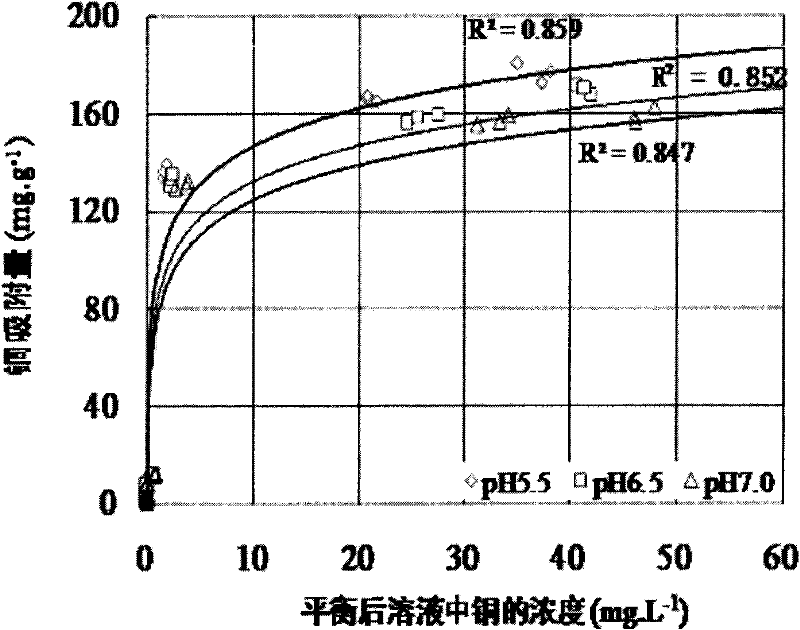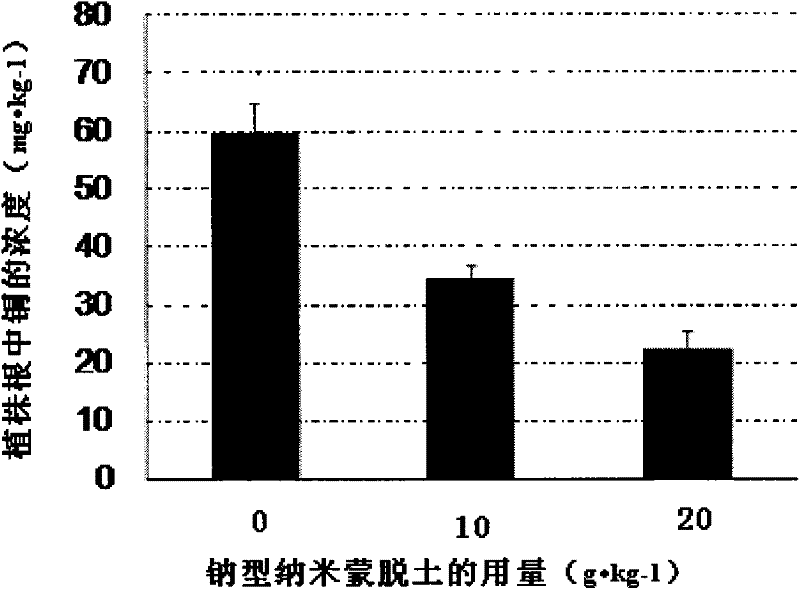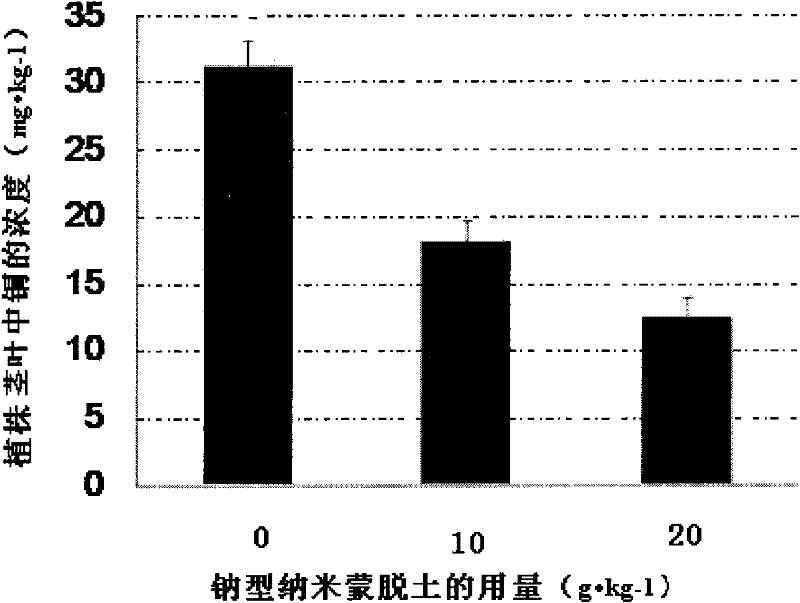Application of Na-type nano-montmorillonite in removing copper in pollutant
A nano-montmorillonite and pollutant technology, which is applied in the restoration of polluted soil and other directions, can solve the problems of heavy metal-contaminated soil that have not been reported, and achieve the effect of strong adsorption capacity and high treatment efficiency.
- Summary
- Abstract
- Description
- Claims
- Application Information
AI Technical Summary
Problems solved by technology
Method used
Image
Examples
Embodiment 1
[0020] The preparation of embodiment 1 sodium type nanometer montmorillonite
[0021] The commercially available montmorillonite (BT) was prepared according to the following method to prepare sodium-type nano-montmorillonite.
[0022] First prepare the montmorillonite suspension with water, add 5% sodium carbonate modification agent under the condition of constant stirring, wherein, the mass ratio of sodium carbonate to montmorillonite is 1:50, after stirring for 2 hours, use physical sedimentation method to remove The coarse particles in the lower layer are dried, and then the nano-montmorillonite is obtained by ball milling (ball mill model: QM-3SP7). The physical and chemical properties of the above-mentioned nano-montmorillonite were determined by methods such as X-ray diffraction (XRD), and the results are as follows (see Table 1). After determination, the main compound components of the above-mentioned nano-montmorillonite include: SiO 2 、Al 2 o 3 , Fe 2 o 3 , CaO ...
Embodiment 2
[0025] Example 2 Na-type nano-montmorillonite adsorption and removal experiment of copper in water
[0026] Take by weighing the sodium type nanometer montmorillonite prepared by embodiment 1 in the plastic centrifuge tube, then with 0.05mol / LKNO 3 As a supporting electrolyte, add 0, 5, 10, 30, 60, 120, 150, 180, 240 mg·kg into each centrifuge tube -1 CuSO 4 ·5H 2 O aqueous solution 30ml, and with 0.05M HNO 3 / KOH to adjust the pH of the solution. According to the amount of sodium-type nano-montmorillonite and the pH of the solution, 6 groups of experiments were designed. The specific amount of sodium-type nano-montmorillonite and the pH of the solution in each group are shown in Table 2, and each group of experimental treatments was repeated 3 times. Cover and seal the centrifuge tube with the sample added, shake at a constant temperature at 25°C for 24 hours, then stand still and centrifuge (4000r·min -1 ) for 20 minutes, filtered, and measured the concentration of Cu i...
Embodiment 3
[0035] The passivation effect of embodiment 3 sodium type nano-montmorillonite to copper in polluted soil
[0036]The contaminated soil used in this example is taken from the actual copper-contaminated soil in the field (the soil of the vegetable garden in the mining area), and the copper content in the soil reaches 161.2mk.kg -1 , the pH of the soil is 6.5. The recovered soil was air-dried and passed through a 2-mm sieve, and a pot experiment was carried out to determine the effect of adding the sodium-type nano-montmorillonite prepared in Example 1 on copper absorption by plants.
[0037] In this example, the test plant is Chinese cabbage.
[0038] According to the different dosage of nano-montmorillonite, three treatments were set up in the experiment: 0 (blank, CK); The pots used in the experiment are small plastic pots, and each pot is filled with 500 grams of soil. The pakchoi seeds are planted in the pots after being germinated, and 0.2 g of N fertilizer is added to e...
PUM
 Login to View More
Login to View More Abstract
Description
Claims
Application Information
 Login to View More
Login to View More - R&D Engineer
- R&D Manager
- IP Professional
- Industry Leading Data Capabilities
- Powerful AI technology
- Patent DNA Extraction
Browse by: Latest US Patents, China's latest patents, Technical Efficacy Thesaurus, Application Domain, Technology Topic, Popular Technical Reports.
© 2024 PatSnap. All rights reserved.Legal|Privacy policy|Modern Slavery Act Transparency Statement|Sitemap|About US| Contact US: help@patsnap.com










